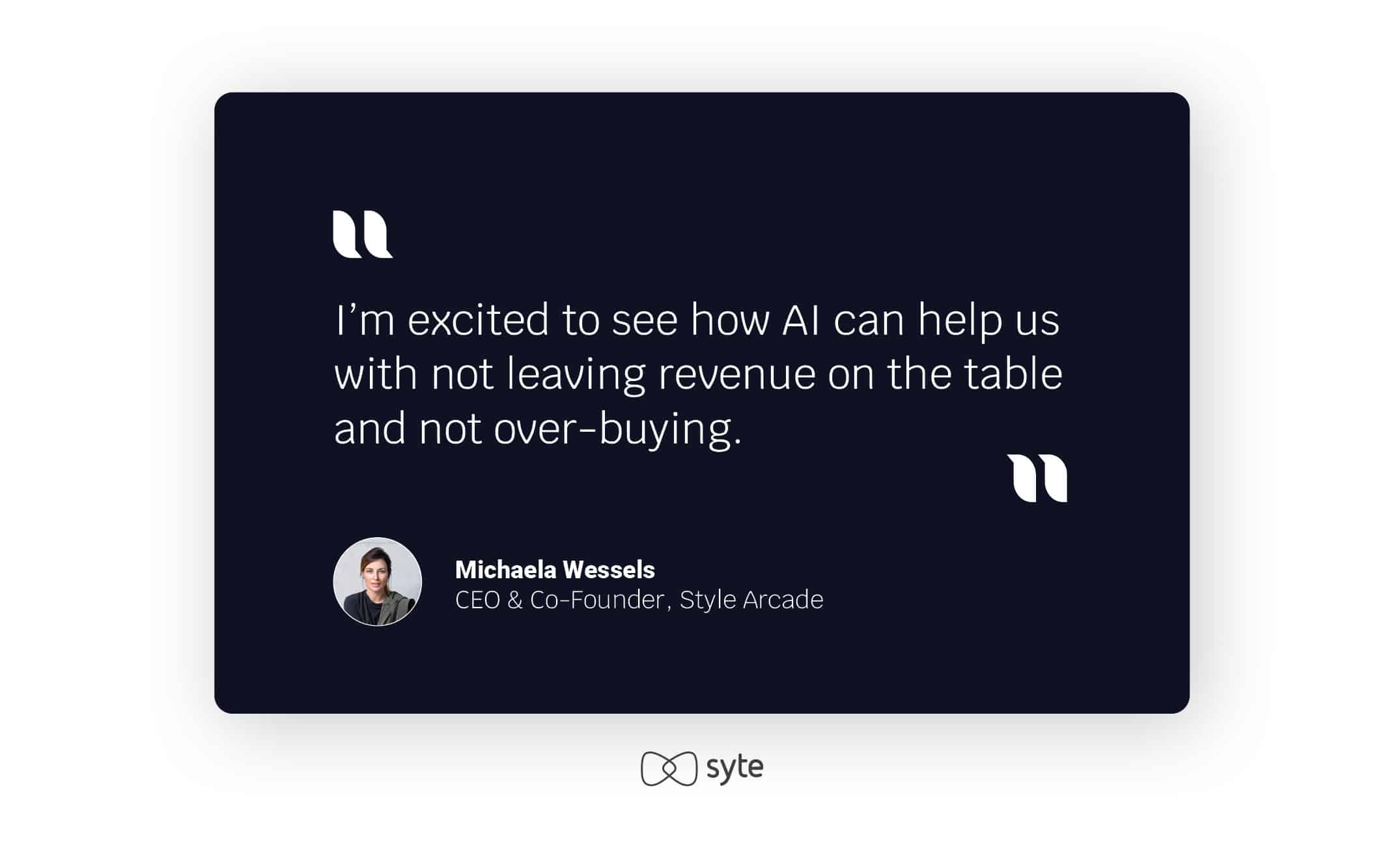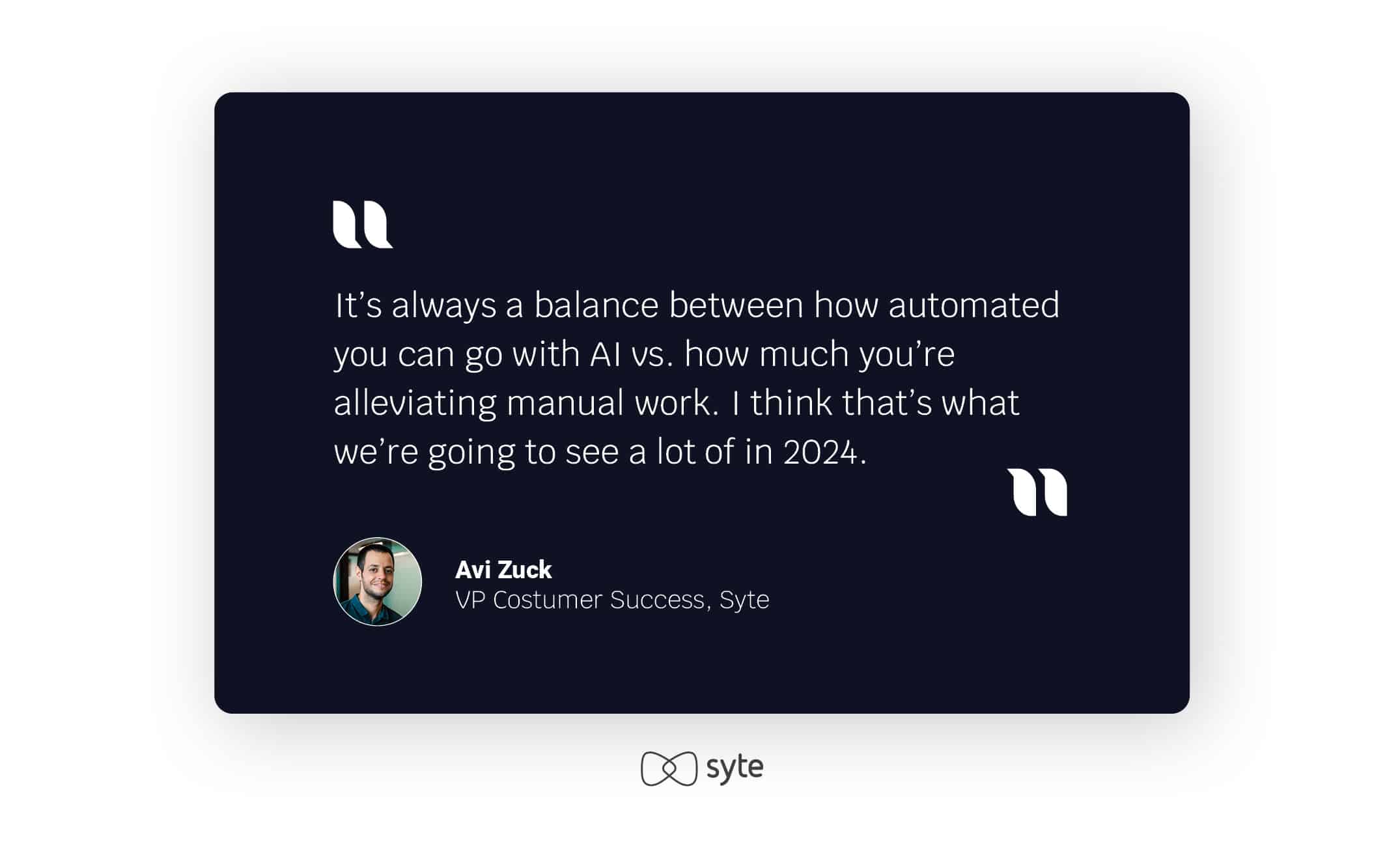Michaela Wessels, CEO and Co-Founder of Style Arcade, shares best practices and insights into cutting-edge technologies that could level up assortment buying and planning in 2024.
With AI, there’s no more guesswork when it comes to demand forecasting and assortment planning. Brands and retailers can now align closely to customer needs, buying intent, consumer behavior, and emerging trends. When implemented effectively, AI has the potential to streamline the customer journey, ensure product availability, and optimize the conversion rate.
Our webinar with Style Arcade offers an insider look into using AI-powered solutions to enhance assortment planning for the upcoming year. Tune in as Style Arcade CEO, Michaela Wessels, and Syte VP Customer Success, Avi Zuck, address the hurdles of merchandising in 2024 and unveil strategies for leveraging advanced retail technologies to achieve success.
Yearly Planning Is Crucial
For brands and retailers, planning is an ongoing process. As Michaela emphasizes, buyers and planners must simultaneously evaluate current, past, and future seasons, making countless decisions for each product — ranging from price and quantity to color and style.
She notes the importance of multi-faceted assortment planning to avoid disjointed selections akin to a “fruit salad.” However, the sheer amount of data and not knowing what to do with it can be overwhelming. Simply relying on traditional BI tools and spreadsheets is insufficient and can potentially cause overstock or missed revenue opportunities when popular items sell out.

Retail Insights Gleaned From 2023
AI gained considerable traction in 2023 and remains a hot topic among tech-savvy crowds. Many remain undecided on its merits and whether it’s a hyped-up technology or a genuinely valuable tool. “This has left brands in a state of uncertainty,” says Michaela.
While some retail technologies like recommendation engines have helped retailers match customers with products they desire, there is still room for improvement. According to Avi, although displaying alternative products for out-of-stock items has sustained customer engagement, significant drop-offs persist. In 2023, customers bought a lot more than expected, although with a lower average order value (AOV) due to major discounting.
AI has the potential to revolutionize operations with concrete numbers. By quantifying its effects, brands can gauge the added revenue or cost savings achieved. Retailers can also run analyses to determine the profit potential of fully stocking in-demand items.

AI Tagging Is Powerful for Conversion
AI tagging offers a highly useful solution for improving the conversion rate by providing information on product availability and customer demand. As Michaela explains, AI tagging helps quantify the revenue gap from out-of-stock best-sellers and is powerful for future assortment planning.
Although challenging to keep up with diverse demands, AI tagging enables retailers to tailor their offerings effectively. For instance, Michaela notes that sending emails to customers with best-selling products synced to updated inventory levels at the time of opening the email boosts conversion because shoppers are never shown out-of-stock items.
Customers Reap the Greatest Rewards
Both Avi and Michaela agree that customers can gain the most from AI solutions. By unifying the taxonomy of the front end, retailers can enhance the browsing experience and make it easier for customers to find what they’re looking for. Moreover, AI-driven data points provide information on customer behavior and enable retailers to optimize their offerings accordingly.
Generative AI technologies, such as digital changing rooms and image enhancement, also revolutionize the shopping experience, and developments like ChatGPT facilitate natural and efficient interactions. Ultimately, these innovations translate into tangible benefits for customers — from improved product recommendations to streamlined sizing options – and ensure a seamless and satisfying shopping journey.
AI Adds a Personal Touch
As Avi explains, AI can personalize the shopping experience by mapping out lexicons and ensuring the language matches the client’s jargon and tone of voice. Image recognition and smart collections further enhance personalization, while key technologies like generative AI and product description generators balance automation with manual oversight. Styling and personalization tools cater to individual preferences, maximizing basket size and improving product recommendations for a tailored shopping experience.

AI Makes Efficient Assortment Planning a Reality
By leveraging advanced technologies, such as visual and generative AI, retailers can focus on what truly matters without getting bogged down by mundane tasks.
With AI-powered solutions, retailers no longer have to start everything from scratch, empowering them to streamline their operations and make data-driven decisions with ease.
Watch the full webinar here.